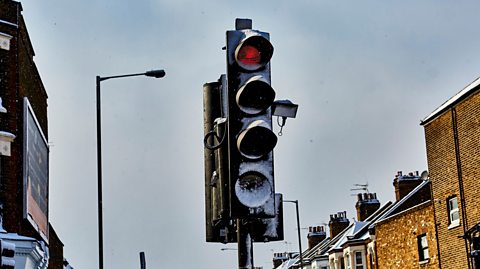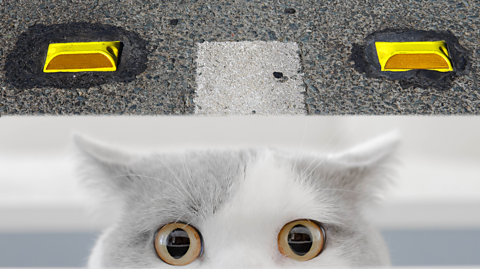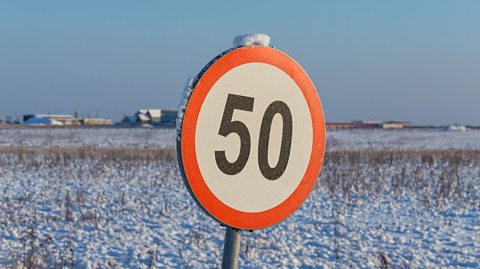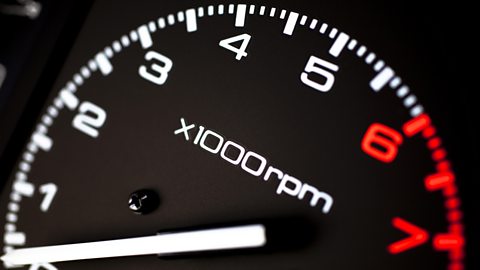The carтs packed with presents, the sat navтs on and Chris Rea is crooning Driving Home for Christmas to get everyone in the mood for the journey.
As thousands of us set off by car to see loved ones over the festive season, we take a look at the science of how our roads transport us safely from A to B this Christmas (and all year round).
Traffic lights

No one likes to encounter too many red lights on a journey, especially if thereтs turkey in the oven. But spare a thought for the good they do. Traffic lights are the ultimate guardian of our roads, keeping traffic flowing and helping us avoid accidents.
Computers code their light cycles and are kept in traffic control centres that also process data about the flow of traffic. Traffic lights were originally coded to operate the same way every day and were manually updated and re-coded if traffic patterns changed. As you can probably imagine, this took a long time and wasnтt a very effective way of controlling traffic.
In the late 1970s a research lab sought to improve this system. The new method (put simply) used the computer that controls the traffic light to also continuously collect data about traffic flow and make tiny but regular improvements. This method, still used in the UK today, is called split cycle offset optimisation. It doesnтt exactly roll off the tongue, so itтs shortened to SCOOT.
Experiments showed SCOOT could reduce traffic delays by over 20% on a day-to-day basis. However, its biggest benefit was how it could react to тunusual eventsт. In Toronto, an experiment run during and after a baseball game showed that it cut traffic delays by over 60%, because the system reacted the very second traffic changes were detected.
Catseye road studs

These little reflective dots, particularly useful for the short days and dark nights over the festive period, were invented by Yorkshire-man Percy Shaw. Some say inspiration struck one dark night when he was out driving in his hometown of Halifax, and saw his headlights reflected in the eyes of a cat. Whether or not this is actually true, he decided to invent something that would allow drivers to safely navigate the roads in the dark.
So, the тcatseyeт was born. Itтs made of three parts:
- The first is 14mm glass reflector. The material itтs made out of repels particles and debris from the road when cars dislodge it, meaning they stay cleaner for longer.
- A rubber insert, which, when passed by a car, depresses and тwipesт the reflector, making absolutely sure that nothing is obscuring it.
- A cast iron base, keeping it locked securely into the road.
They donтt just show you where youтre going, though. Being slightly raised, you can hear if youтre starting to drift over into the wrong lane.
Nowadays though, we might start seeing less of the reflectors inspired by our feline friends on the road. In 2016, legislation was updated to allow light emitting diodes (LEDs) to replace reflective glass in road studs. Solar powered LEDs have been developed for this purpose, and can apparently can be seen by drivers 1000 times further away than reflectors. Purr-fect for driving at night!
Speed limits

Whilst it is the season to be jolly, that doesnтt mean throwing the rulebook out and ignoring the Highway Code! We may be excited to get to our next destination as soon as possible, but remember speed limits are there for a (really good) reason.
Complex maths goes into deciding how fast we can drive on our roads.
A lot of it has to do with stopping distances. This is the length of road your car travels before it comes to a complete stop from the point at which you apply your brake. It can be calculated by adding your reaction distance with your braking distance. Your braking distance is just how far the car travels before it comes to a full stop, which can be affected by wet and icy roads, or worn down tyres.
The important bit to understand though, is your reaction distance. This is the distance you travel in the space of time it takes you to identify a hazard and then apply the brakes. At higher speeds this reaction distance is greater, as you travel further over a short amount of time. Therefore, there is more chance that you will crash before you have time to react and slam on the brakes.
The speed you travel at affects the amount of force your car has when it makes impact with something. The Royal Society for the Prevention of Accidents states that:
- Hit by a car at 40 mph, nine out of ten pedestrians will be killed.
- Hit by a car at 30 mph, about half of pedestrians will be killed.
- Hit by a car at 20 mph, nine out of ten pedestrians will survive.
For this reason, thereтs legislation that says that in built up areas, such as cities and towns, 30 mph is the maximum speed at which cars can drive.
Now youтre all up to speed on the science of road safety, it should drive some very interesting conversation with your mates. Youтre welcome!
This article was published in December 2018
What is code? revision-guide
If you want to learn how to code a traffic light, first you need to know what code is. Find out here.

World War 2. collection
If you want to learn more about WWII, have a flick through this KS3 History content.

Motion of vehicles
Read this to learn more about how cars move and brake.
